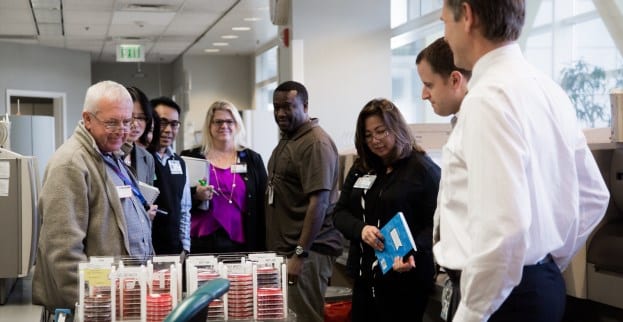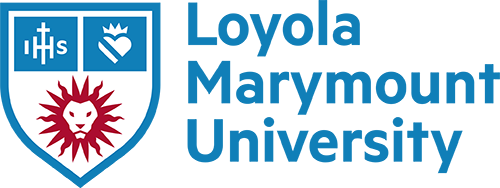
Could ‘lean’ practices—as seemingly simple as reducing batch sizes, displaying visual checklists and changing laboratory layouts—effectively change the face of U.S. healthcare? Absolutely, said Bohdan W. Oppenheim, systems engineering professor, creator and academic project advisor for Loyola Marymount University’s innovative new program, Graduate Certificate in Lean Healthcare Systems. “Lean is the main tool for improving healthcare in the United States.”
Originally developed as an operational model in the Japanese auto industry, the concept of lean thinking focuses on removing waste while maximizing value. “The word lean simply means removing waste—identifying and removing waste from operations, while at the same time promoting value to the customer,” explained Oppenheim, who has co-authored three books on the subject. “Just about anything imaginable can be improved—streamlined—using lean methodology.”
The first cohort to earn a certificate in the three-course graduate program was a group of 10 directors and managers from Kaiser Permanente’s Southern California Medical Group. In their final class last fall, Oppenheim and the students worked as a team to focus on streamlining operations in the centralized clinical laboratories that serve more than 200 of Kaiser’s medical centers in Southern California.
$15 Million in Predicted Savings
The team’s final report identified 139 best practices, called lean enablers that streamline operations, which are predicted to save Kaiser more than $15 million in operating expenses. The report notes that even though the enablers have been developed based on Kaiser laboratories, the vast majority of practices can be applied to any laboratory across the U.S. and abroad.
Participants at Kaiser are already seeing measurable results, including a 30 to 70 percent reduction in test throughput time. “The changes that our department has already implemented have been a great success,” said Chiemi Tabata, Assistant Director of Laboratory Services, Automated Chemistry, at SCPMG Regional Reference Laboratories. “We eliminated some traditional laboratory practices, streamlined workflow, broke down some of the inter-departmental barriers, and became more agile in quickly recognizing waste and removing it. I am truly a better laboratorian and manager because of my experience with the [Certificate] Program.”
Several enablers focus on promoting continuous workflow. Instead of waiting for a cart of laboratory specimens to be full, for example, technicians now send samples straight to testing. “The traditional thinking is that here we have this expensive machine…so we are not going to run it empty,” Oppenheim explained. “That’s suboptimization. It’s optimizing the machine operation, but it acts totally against the interest of the customer. The customers here are the patient and the doctor, and those two need to know the test results as soon as possible.”
Putting Patients First
With the dramatic potential for cost reduction, the benefits to the healthcare industry are readily apparent. But what does lean thinking ultimately mean for patients? As Oppenheim noted, patients are the de facto customers in a lean healthcare model. “In lean, we always optimize things for the end customer,” he said. “When you lower the costs, you automatically make healthcare more affordable, more accessible, and fairer. That comes together as a package.”
Oppenheim believes the certificate program puts LMU on the front lines of healthcare reform. “We now offer a very practical graduate certificate program for healthcare operations—serving not only laboratories, but also hospitals and clinics—and it uses the most powerful methodology for simultaneously lowering cost, improving quality, lowering throughput time, and improving morale,” he said. “We are helping the local community—we are helping the nation—with this program.”



